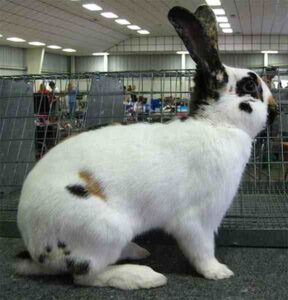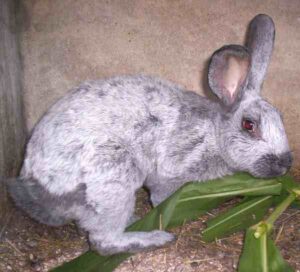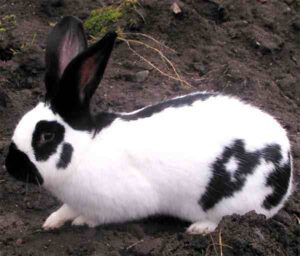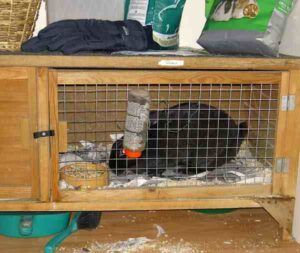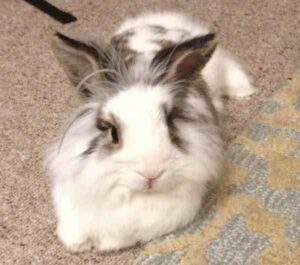As the name suggests, the German Lop rabbit is a domestic rabbit breed originated from Germany. It was developed by the rabbit fanciers in Germany in the 1960s.
During that time, the German rabbit breed enthusiasts decided to develop a medium sized lop eared rabbit breed that would compliment the Dwarf, French and English varieties. So they started to breed Netherlands Dwarves and French Lops together. Some other breeds were introduced at a later stage in order to increase vitality, and that gave the German Lop rabbit it’s distinctive long Roman nose.
The German Lop rabbit breed was officially recognized in Germany in 1970 and given the title Deutsch Klein Widder. By 1972 the breed had made it’s way into Holland, and was recognized in 1976. German Lop rabbit was recognized by the British Rabbit Council in the year of 1990.
German Lop Rabbit Characteristics
The German Lop rabbit is a medium sized breed. They are very cobby, massive and muscular. Their neck should be visible and it should be equally as broad in the shoulder as the hindquarters. The front legs of the German Lop rabbits are short, straight and thick.
And their hind legs should lie parallel to the rump and not jutting out when resting. From a short nape the line of the back should rise in a slight curve to a well-muscled rump which should be short and well rounded. Their head is strongly developed with a distinct width between eyes.
They are well rounded and have a cute and cuddly appearance and a striking Roman nose. A dewlap in the German Lop does is permissible. German Lop rabbit has broad, thick ears which are of good substance.
And their ears hand down straight just behind the eyes without either being carried forwards or backwards. Their coat is of a moderate length, thick, dense and very soft and has a very healthy undercoat with thick guard hairs.
Average body weight of this rabbit is between 2.9 and 3.9 kg. There are many color varieties of this rabbit breed. And all recognized colors are accepted as well as the butterfly pattern (but not the broken pattern).
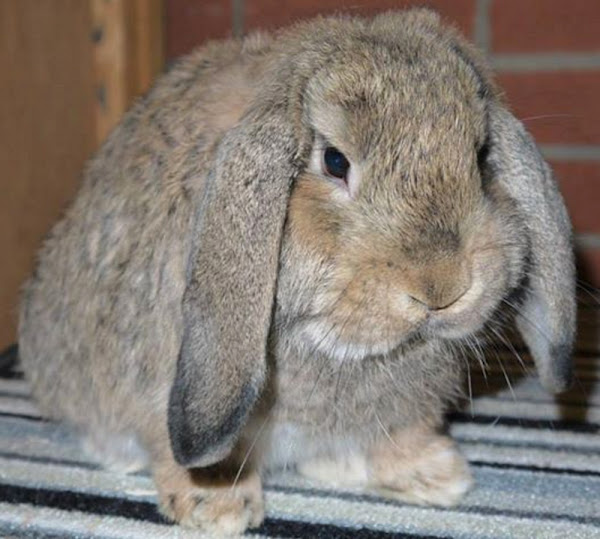
The recognized color groups are; Self (black, blue, blue eyed white, chocolate, lilac, ruby eyed white), Shaded (sable, smoke or frosted pearl, tortoise, sable point, seal), Agouti (chestnut agouti, chinchilla and opal), Ticked (silver fox, sable or smoke pearl steel, gold tripped) and Wide band (cream, fawn, orange and red). Photo from Pets4Homes.
Uses
The breed was developed mainly as a show rabbit. They are very good for showing successfully for a few years. They are very good as pets, and mainly raised as pets today.
Special Notes
This rabbit breed has a very likeable personality. They are very calm and docile in temperament. These qualities have made them great as pets, show animal or both. The females can be bred from their seven to eight months of age. The number of babies per litter ranges from 4-8. And the does are very good mothers.
German Lops are pretty long lived rabbit breed. The average lifespan of a properly cared German Lop rabbit is up to 12 years. Review full breed profile of this rabbit breed in the chart below.
| Breed Name | German Lop |
| Other Name | Deutsch Klein Widder |
| Breed Purpose | Mainly raised as pets. |
| Breed Size | Medium |
| Weight | Between 2.9 and 3.9 kg |
| Suitable for Commercial Production | No |
| Good as Pets | Yes |
| Climate Tolerance | All Climates |
| Coat Color | There are many color varieties of the German Lop rabbit. And all recognized colors are accepted as well as the butterfly pattern (but not the broken pattern). The recognized color groups are; Self (black, blue, blue eyed white, chocolate, lilac, ruby eyed white), Shaded (sable, smoke or frosted pearl, tortoise, sable point, seal), Agouti (chestnut agouti, chinchilla and opal), Ticked (silver fox, sable or smoke pearl steel, gold tripped) and Wide band (cream, fawn, orange and red). |
| Rarity | Common |
| Country of Origin | Germany |

